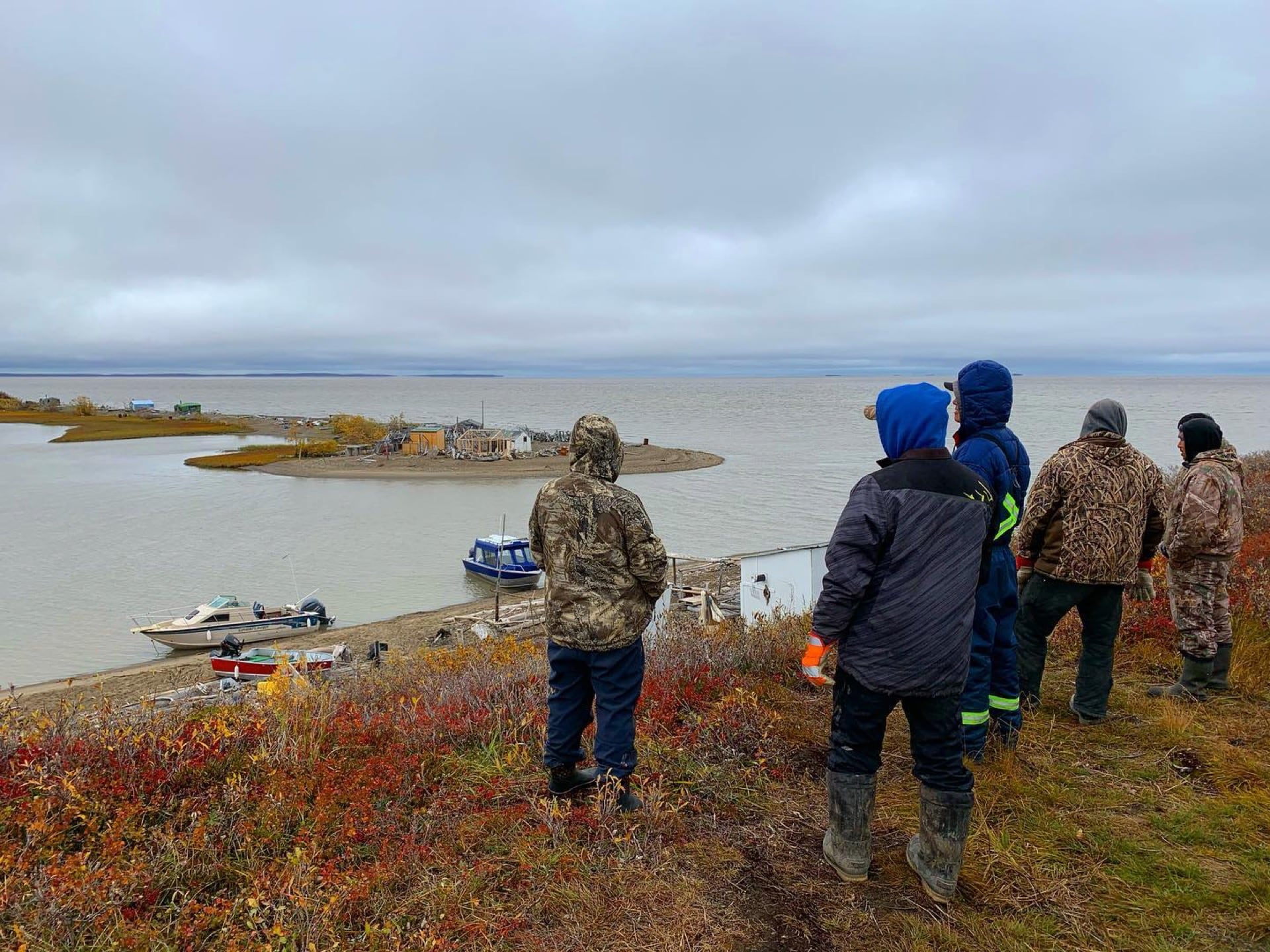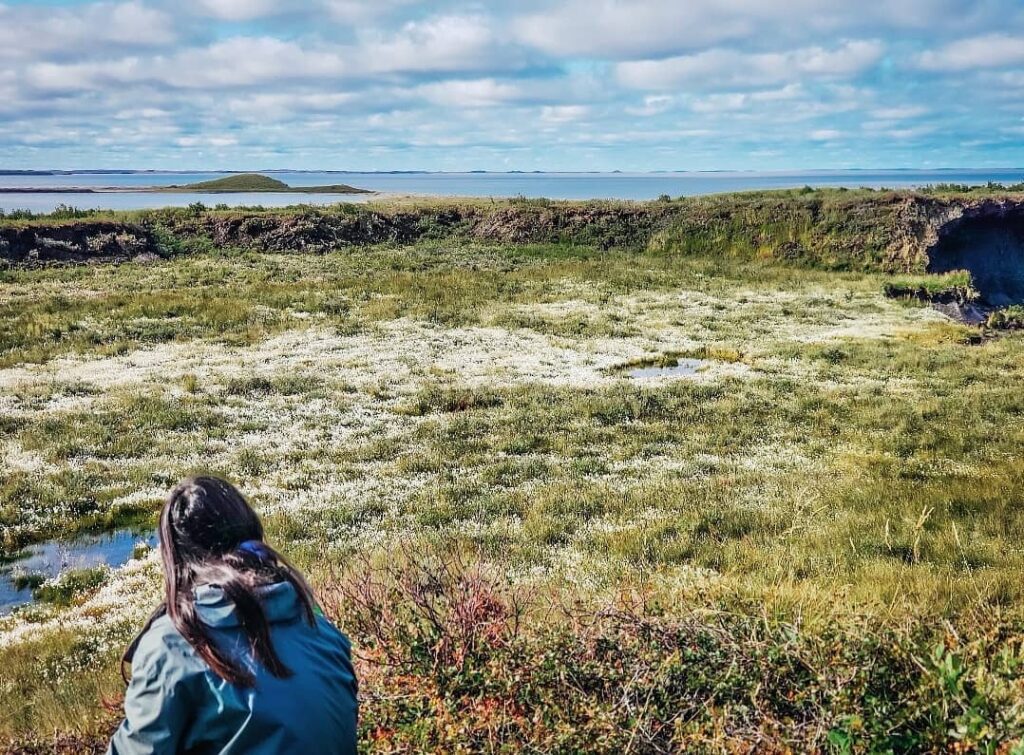
Process
Get an overview of the Environmental Impact Review Process and how the EIRB’s review board determines whether a project is practical and viable.
Environmental Impact Review Process
The Environmental Impact Review Board (EIRB) has developed a flexible and public environmental impact review process designed to respect the Inuvialuit Final Agreement and limit the chance that a development will damage an area being developed or disrupt its wildlife.
The review process operates according to a few key principles:
- Focus on Inuvialuit cultural identity and the social, economic and cultural effects of the development
- Consider traditional and local knowledge and promoting sustainable development
- Protect the environment and wildlife
The process requires the developer to provide a great deal of information about the proposed development. For example, the developer must be clear about how the development could harm the area and the people who live there. And the developer must show their plans for protecting the environment.
Federal and territorial government agencies are also involved in the review process. They are expected to provide expert information during every phase and carry out their responsibilities as regulators.
Starting the review
A review begins when the Environmental Impact Screening Committee refers a case to the EIRB. Once that happens, the EIRB’s review board completes several tasks:
- Contact the developer. The EIRB arranges a meeting with the developer to explain the review guidelines and answer any questions.
- Communicate with the public. The EIRB starts a public registry on its website and publishes a public notice of referral. The notice invites organizations and individuals to register as parties to the proceedings – that is, people interested in the case. The registry includes all documents that relate to the review, at this stage and throughout the review process.
- Keep all parties up to date. The EIRB puts anyone who registers as a party to proceedings on its list to receive documents about the review. Each party is responsible for keeping up to date on how the process is going. People may file documents with the review board even if they have not registered as a party.
- Consult with other jurisdictions. Some proposed developments cross boundaries with the Yukon, Nunavut, Mackenzie Valley, and Alaska. Others may require the EIRB to work closely with another environmental impact assessment organizations or some other body. The review board works together with other jurisdictions and organizations if there are transboundary issues.
- Draft a schedule and workplan. The review board drafts a timeline and workplan for all parties involved, and posts it on the public record for everyone to see and comment on.
Scoping the review
Scoping is the process of identifying the issues that need to be studied for a proposed development. This is the review board’s first major task and it is important to get it right.
Did the developer give the review board enough information? How will the development be built and operated? What geographical area will it cover? How long will it take to build? The review board will ask these and many more questions to ensure everyone involved understands the development. The developer will be contacted if any information is missing.
Drafting the terms of reference
Once the review board has done its research and consulted with all the parties it needs to, it puts together a document called a “terms of reference”.
This document is based on information the review board received from the Environmental Impact Screening Committee (the body that referred the review to the EIRB), the developer’s description of the project, and any other information the review board considers relevant.
The terms of reference is made public and shared with all parties interested in the proposed development.
Consulting the community
The review board may hold meetings in communities affected by the proposed development. These meetings explain the EIRB process, allow the developer to provide an overview of the proposed work, and invite community members and others to comment and share any concerns.
Once all parties have commented on the draft terms of reference and all public meetings have taken place, the review board finalizes the terms of reference.
Preparing and accepting the environmental impact statement
The developer is responsible for completing an environmental impact statement. The developer is encouraged to work with all the concerned parties as it designs the statement and studies how the proposed development will affect the environment and communities.
Once the review board receives the statement from the developer, the board goes through a lengthy process of reviewing and refining, asking the developer and others for more information, holding technical meetings, doing site visits, adding written submissions, and more.
Any party can ask questions and submit written information during this process. This includes submitting evidence, opinions, concerns about issues, and recommendations for the proposed development. Organizations that issue licenses and permits also make written submissions during this phase.
Holding hearings
Before it makes its decisions, the review board holds public hearings to hear directly from the developer, interested parties, Inuvialuit, and the public. The EIRB makes a public announcement about the hearings that includes what will be covered, when and where it will be held and when people must file information so it can be considered at the hearing.
Making a final decision
After the hearings have ended, the public phase of the process is closed. The review board may ask the developer or other parties for more information. It will then make a recommendation for or against the proposed development based on all the information on the public record, and deliver the decision in a final report.
If the review panel recommends that the development proceed, it also recommends certain terms and conditions. For example, it may say that the development must:
- Meet the community’s economic, social, and cultural needs while preserving the natural environment for generations to come.
- Preserve the community’s ability to continue hunting, trapping, fishing, etc.
- Have plans to minimize or fix any damage to the environment.
- Monitor the development appropriately.
- Set out a worst-case scenario and how the developer would handle and pay for it.
Once the EIRB has made its recommendation, it is up to government authorities to make a final decision about whether the development will go forward.
Process FAQ
Do you have questions about our process? Discover helpful insights on our FAQ page, then feel free to contact us for any additional details you need.
